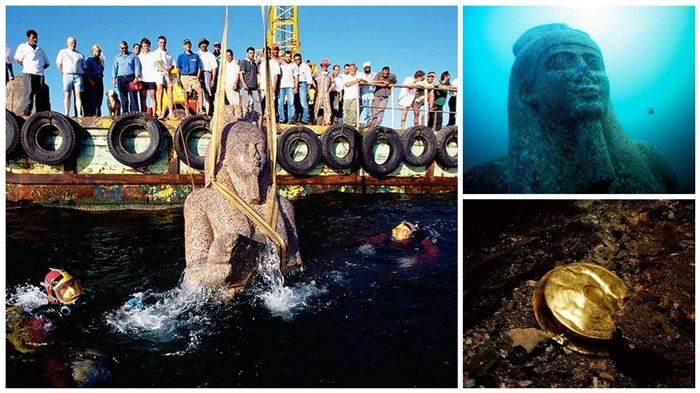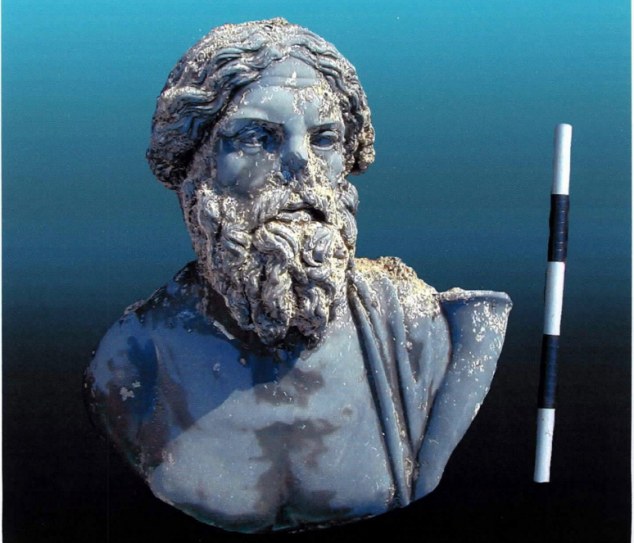
Many people believe that out in the ocean somewhere there lies a city called Atlantis. The city that has been found submerged in the Mediterranean off the coast of Egypt is the closest thing that could be considered Atlantis.
Nearly 1,200 years ago there was a story about a large city – believed to be a myth – where Herodotus visited Helen of Troy and Paris, who was Helen’s lover. However, the story ended with the city of wealth being buried under water.
The city, Heracleion (after Hercules, who made his legend there), also known as Thonis, was found decades after the city was presumed submerged. Divers began bringing up treasures that had sunk with the entirety of the city. The divers also were able to take photos of what the city looked like beneath the water, hoping to create a drawing of what it looked like originally.
The city that disappeared under the Mediterranean years ago was found 10 years ago after a survey that was being done on the Egyptian shore. Between the photos being taken and the artifacts that are being brought up, archaeologists and researchers have figured that Thonis had been the main trading city in the area.
When the excavation started, archaeologists found that there were more than 64 ships that had been buried with the city. Those ships sit in thick clay at the bottom and cover the sea bed. The archaeologists also found gold coins and weights that are made from bronze and stone. The coins and weights are what gives historians the theory that Thonis was a trading city.
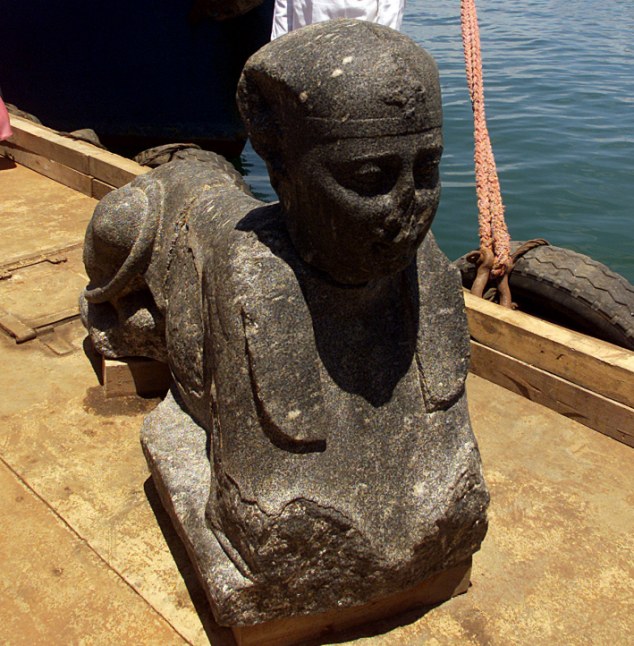
Some larger pieces brought to the surface were huge 16-foot statues, most likely gods. Near the larger statues the archaeologists found smaller statues of what could be considered minor gods. There have also been several stone slabs found in the ocean. Some of the slabs have ancient Greek and Egyptian writing on them. They have been brought to the surface to be studied in more detail.
Some of the most amazing artifacts found were the dozens of sarcophagi made from limestone. The archaeologists and researchers believe there could still be mummified remains of animals in them. The people generally used mummified animals to appease the gods.
One of the directors on the diving team, Dr. Damian Robinson, said that he and the team are trying to find out which gods belonged to which temples in the sunken city. They hope to find out more information about the gods. He also said that one of the more interesting discoveries on the site would have to be all of the ancient ships that litter the sea floor. He said that they have found nearly 700 anchors so far.
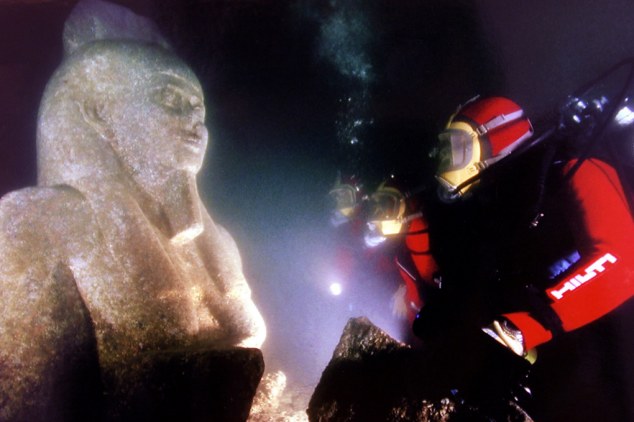
Since the first photos had been taken, there has been a team of researchers working on a three-dimensional model of the entire city to get a better understanding of it. With the 3D model researchers have figured out that at the heart of the city was a large temple dedicated to the god Amun-Gereb. This was the supreme god of the Egyptians at the time. Out from the temple was a vast number of canals and channels, which is why the city became so wealthy and important. These canals proved to be an important port in the Mediterranean.
Dr. Robinson believes that the port became the first to tax imports and exports, all while being run by the main temple in the center of the city. The site of the city is in 150 feet in the water in the Bay of Aboukir. It is dated to around the 8th Century BC; archaeologists believe that the city sat at the mouth of the River Nile and opened up onto the Mediterranean.
Scientists are still trying to figure out what caused the entire city to become submerged in water. They do believe that it happened nearly 1,000 years after it was built. They have thought that it could possibly be the sea levels slowly rising with a collapse of the sediment the city had been built on. This would have caused the city to drop nearly 12 feet. From the ancient texts that were written over time, it is believed that Thonis wasn’t the only city to have sunk along the coast.
If not for a French archaeologist, Dr. Franck Goddio, the city might still remain unseen and forgotten. When he discovered the site, he had been doing a survey, looking for French warships that had supposedly sunk in the Nile in an 18th Century battle.
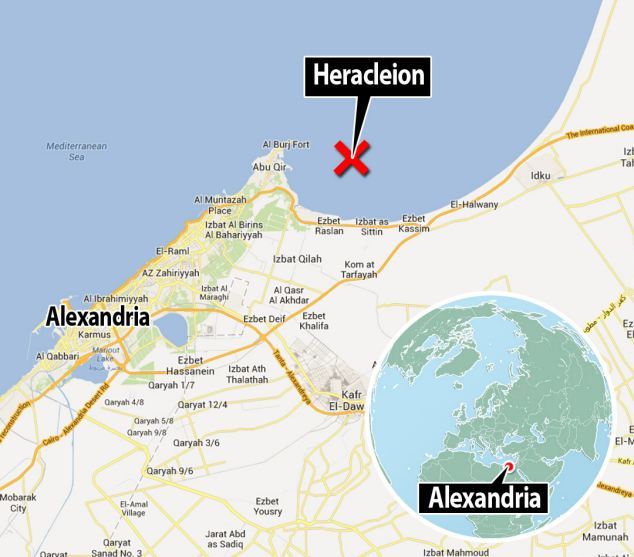
One University of Oxford archaeologist, Sir Barry Cunliffe, said that thanks to it being untouched over centuries and the clay and silt slowly covering the site, the city has been very well preserved. The silt and clay act as a protective layer over time.
Since the archaeologists have found sarcophagi with animals in it, they hope to eventually uncover one with a human in it. Dr. Goddio said that the excavation and discoveries will probably take teams of archaeologists nearly 200 years. They will be working on the site for a long time, hoping to gain knowledge of the life of the Greeks and the life in the sunken city.
Source: http://www.telegraph.co.uk/news/earth/environment/archaeology/10022628/Lost-city-of-Heracleion-gives-up-its-secrets.html
